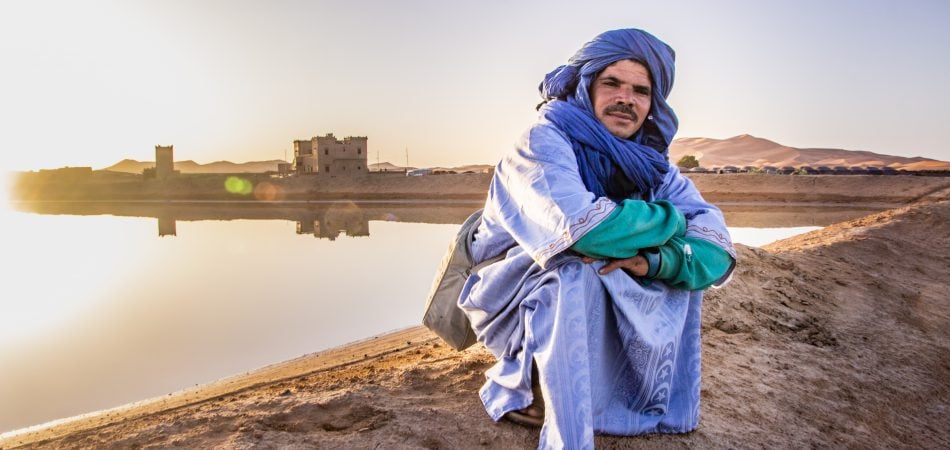
Conclusion and summary of positive and negative developments
Over the past decades, Morocco has made significant efforts to establish an effective integrated water resources management strategy that includes key elements such as a national water masterplan, a national water quality protection plan and a national flood protection plan. The master plans of integrated water resources management at river basin level and the National Water Plan were established for a period of 20 years, based on principles of decentralized and concerted integrated water resources management. They were approved by decree, after consultation with the Supreme Council for Water and Climate and might be reviewed every five years.[1]
Achievements include the establishment of an institutional framework; improving the government’s capacity for water resource planning; improving water use efficiency; increasing effectiveness of existing hydraulic infrastructure; and introducing water pollution control measures.[2] Despite this significant progress, several additional improvements should be considered:
- The design and application of a legal and institutional framework to improve the efficiency and resilience of the water sector.
- Stricter compliance with water allocations will improve their predictability among all users. This would be facilitated by the establishment and enforcement of aquifer contracts, setting rules and monitoring mechanisms for groundwater abstraction at basin level.
- The highly fragmented institutional framework has hindered the formulation of a comprehensive vision and coherent policy objectives. This has led to inefficiencies in the allocation of funding for capital investments.
- Establishing an effective tariff structure and subsidy policy: The tariffs are insufficient to cover operating and depreciation costs, and their subsidized components do not effectively benefit the poor.
- Ensuring that climate adaptation and flooding risk concerns are properly reflected in the design of water supply systems.
- Close cooperation of the Ministry of Equipment, Transport, Logistics and Water with the ONEE, private water companies, municipalities and the industrial sector in order to reduce wastewater impacts.
- Capacity building is needed, and insufficient technical expertise is noted in wastewater treatment and reuse (particularly industrial waste management and agricultural wastewater reuse), which has been acknowledged as a priority for Morocco.
Projection of status of water resources in 2050
In 2015, 60% of Morocco’s population resided in urban areas, a figure projected to reach 74% by 2050. Water availability dropped from 3,500 m3/capita/year in 1960 to 730 m3/capita/year in 2005 and m3/capita/year in 2015, well below the so-called ‘water poverty level’ of 1,000 m3/capita/year. Even without further change in water resource availability, a projected population of nearly 44 million by 2050 would yield a ratio of 510 m3/capita/year by 2050, which is close to the ‘extreme water scarcity level’ of 500 m3/capita/year.[3]
Population growth, rapid urbanization and changes in household structure and economic prosperity are increasing water demand. Demand for domestic and industrial uses was 1,437 MCM in 2010 and is predicted to reach 2,368 MCM by 2030, which represents a 65% growth. Furthermore, urban water demand will face increasing competition from the irrigation sector, and climate change may lead to additional competition between the different water users (agriculture, industry, tourism, drinking water, etc.).[4]
Outline of long-term strategy
The latest strategies and national plans undertaken show a political commitment towards the integrated water resources management approach. Examples of water-related strategies are the Green Morocco Plan (2008), which includes a crosscutting initiative for the modernization of irrigation systems; the National Irrigation Water Saving Programme (2007); and the National Water Strategy and National Water Plan (2009), which focus on the role of complementary water management actions to address water problems and achieve coordinated management of supply and demand, while ensuring equitable distribution between rural and urban areas.[5] These strategies aim to strengthen the use of non-conventional water resources, such as desalinated seawater and brackish water and treated wastewater, as well as the preservation of groundwater resources. The current plans also consider the commitment to achieve the SDGs, mainly SDG 6 (clean water and sanitation), as well as the water-energy-food nexus, which requires more coordination between the actors in the three sectors.
[1] EMWIS, 2011. Countries Water Profiles.
[2] Choukr-Allah R, 2011. ‘Comparative study between Moroccan water strategies and WFD’. In: Junier S et al. (eds.). Dialogues on Mediterranean water challenges: Rational water use, water price versus value and lessons learned from the European Water Framework Directive.
[3] World Bank, 2018. Climate Variability, Drought and Drought Management in Morocco’s Agricultural Sector.
[4] World Bank, 2017. Managing Urban Water Scarcity in Morocco.
[5] Houzir M, Mokass M and Schalatek L, 2016. Climate Governance and the Role of Climate Finance in Morocco.
